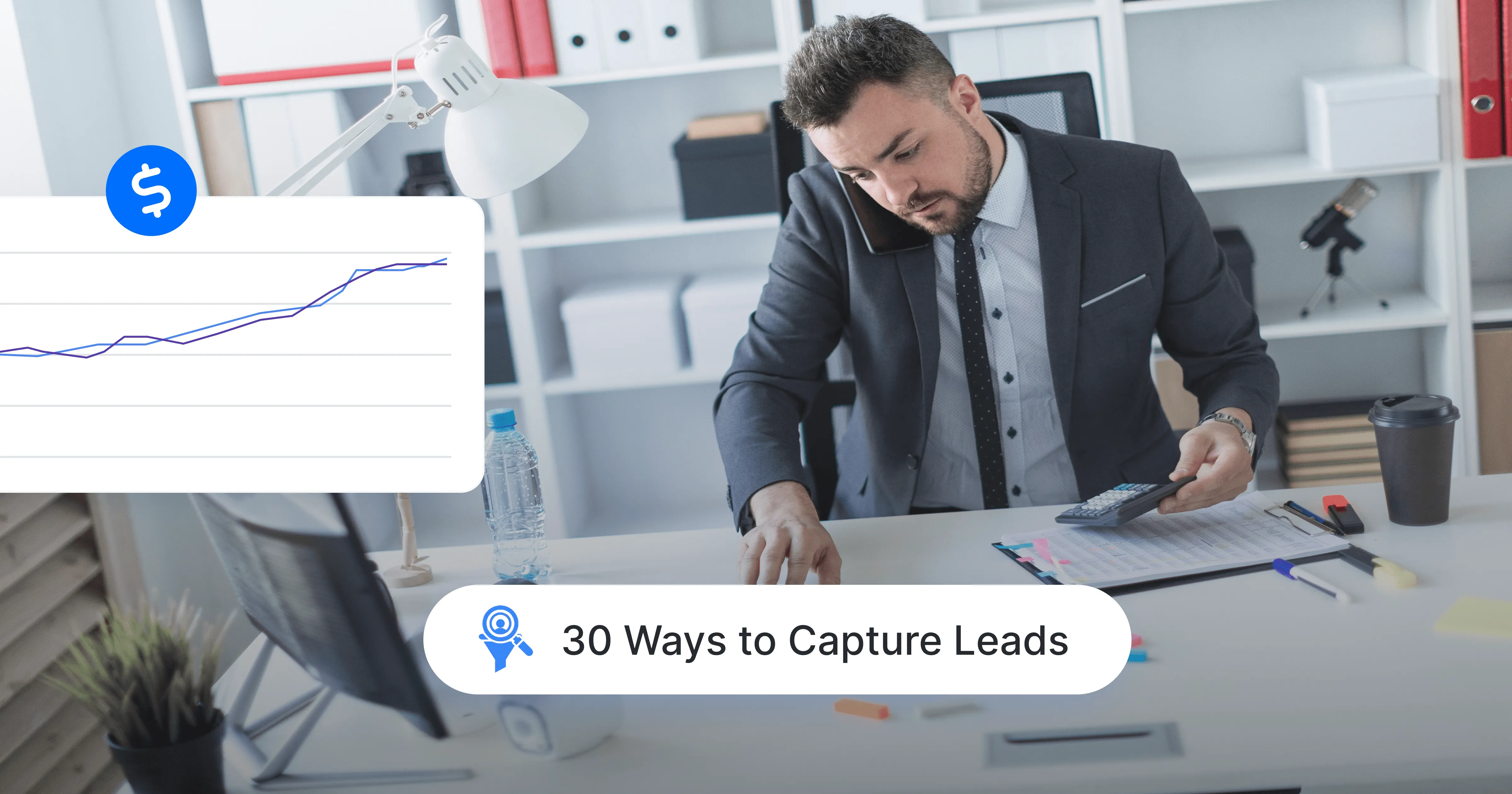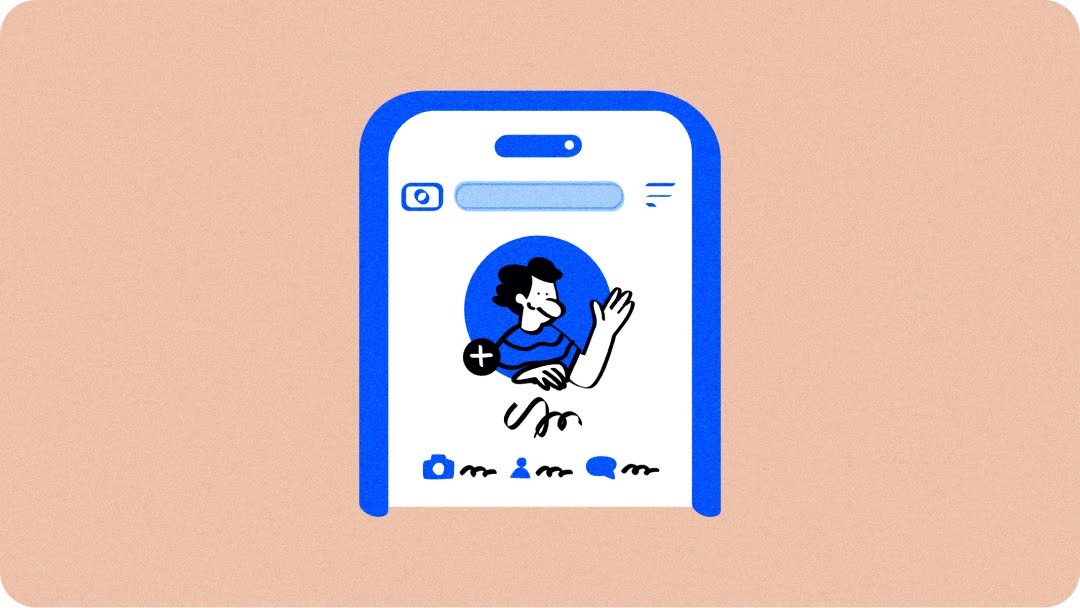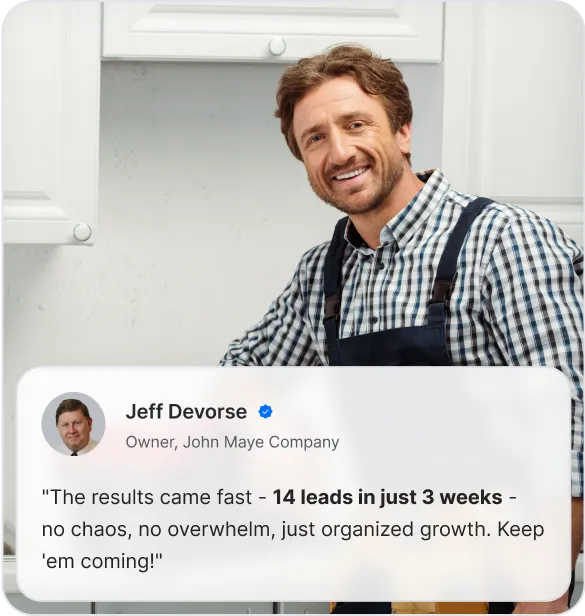You're standing at your booth on day two, watching your competitor three aisles down shake hands with their 8th qualified prospect. At the same time, you're still waiting for the 3rd prospect of the trade show.
The math is brutal. Same $25,000 investment. Same target market. Same competitive products.
Then, why are they generating 3x more leads than you?
The difference isn't luck or budget. Your competitors are using a proven manufacturing trade show playbook that transforms passive booth space into active prospect magnets.
Whether you're preparing or attending any other upcoming manufacturing event, these core strategies will help you walk away with a pipeline, not just a pile of business cards.
Let’s start with something that’s set to make you win!
TL;DR
- Pre-Show Preparation: Target 30-50 ideal prospects with personalized outreach, create event landing pages, and run contests to arrive with pre-scheduled meetings.
- Interactive Booth Experience: Design hands-on demos, use bold headlines, gamify with trivia, and train staff to ask observation-based questions instead of generic greetings.
- Strategic Networking: Roam competitor areas, coffee stations, and after-hours events while hosting exclusive VIP events for top prospects.
- Systematic Follow-Up: Contact within 48 hours via LinkedIn/email/phone, then launch multi-channel nurturing campaigns segmented by lead tier (A/B/C).
- Bottom Line: Explore 30 ways to transform your $$ trade show investment into consistent pipeline growth through systematic execution.
The difference between 3 leads and 30 leads isn't the budget. It's the process.

Quick-List: 10 Ways The Top Manufacturers are Capturing Leads, Again & Again!
1. Target Pre-Show Accounts with Personalized Outreach
The most successful manufacturers treat the event like a sales campaign that starts weeks (sometimes months) in advance.
First step is to identify high-priority clients from your sales team, past event leads, industry prospect lists, and the show’s own attendee roster (if available).
Your goal is simple. Build a “must-meet” list of 30–50 companies that match your ideal customer profile — decision-makers with budgets, authority, and a real use case for your solution.
Here's your 4-week system for guaranteed booth traffic:
- Week 4: Build your list of 30-50 ideal prospects from the attendee roster.
- Week 3: Launch personalized outreach that references their specific projects or pain points.
- Week 2: Follow up aggressively and lock in meeting times.
- Week 1: Send booth locations and confirm final details.
The difference between generic outreach and meetings that actually happen comes down to relevance.
Here are a few sample messages that can get you responses:
Instead of "Visit us at Booth #241,"
Try LinkedIn messages like "Hi Mark, I'll be at IMTS next month and would love to connect, especially since your team is leading the new robotics integration project."
For email outreach: "John, I know your team is evaluating laser welding solutions this quarter. We're bringing a live demo to the show—want me to block 15 minutes for you?"
The key is demonstrating you've done your homework on their business before asking for their time.
2: Craft an Interactive and Experiential Booth

The most magnetic booths aren't the flashiest; they're the ones prospects can't walk past without engaging.
While your competitors display static brochures, smart exhibitors create hands-on environments where plant managers and operations directors can actually experience solutions to their daily headaches.
We’ve compiled four elements that transform browsers into buyers:
- Live demonstrations: Run your CNC machine through a precision cut, show your automated QC system catching defects in real-time, or demonstrate how your software reduces changeover time from 45 minutes to 8 minutes.
- Interactive stations: Let prospects visualize your solution in their facility. Use touchscreens where visitors can input their production parameters and see projected cost savings, or set up VR headsets that show your equipment integrated into their existing production line.
- Problem-solving corners: Create immediate value. When a plant manager mentions downtime issues, your technical team can walk them through a potential solution right there, using your booth setup as the demonstration platform.
- Before-and-after displays: Provide proof that resonates with your audience. Show physical samples of parts produced with and without your process, or create side-by-side cost breakdowns that highlight the impact on your ROI.
Your booth staff should be trained to engage the moment curiosity sparks.
When someone watches your machine run a flawless weld, that's the perfect time to ask, "Want to see what that could do in your facility?"
3: Master Strategic Roaming and Off-Floor Networking
If you're glued to your booth all day, you're missing 70% of the opportunities at the show.
Strategic roaming is hunting for prospects in their natural networking environments where the competition isn't breathing down their necks.
The four hunting grounds that competitors ignore:
- Competitor areas: When you spot someone spending 10 minutes at a competing booth, you know they have a budget and the authority to make decisions. Strike up a conversation nearby: "I see you're looking at automation solutions—what's your current setup like?"
- Coffee stations and lounges: These create opportunities for relaxed conversation. Plant managers drop their guard here, and a genuine question about industry challenges can quickly turn into a booth visit.
- Educational sessions: These attract engaged, learning-focused attendees. Sit near presenters discussing topics relevant to your solution, then connect afterward with audience members who asked thoughtful questions.
- After-hours events: These help build relationships when sales pressure is absent. Hotel bars and mixer events are where real partnerships form because the focus shifts from pitching to problem-solving.
Your portable pitch must be conversational, not salesy.
"We help manufacturers cut machine changeover time in half without adding headcount," opens doors.
"What's your biggest production bottleneck?" keeps them talking. This combination turns random encounters into scheduled follow-ups.
4: Implement Modern Lead Capture and Qualification Technology
Trade show leads can take months to convert, which makes real-time qualification your competitive advantage.
You need to know who deserves an immediate phone call and who gets added to a nurturing campaign before you leave the venue.
Modern lead capture eliminates the follow-up guesswork:
- Automatic CRM Sync: Badge scanning with an automatic sales system sync (CRM, if it exists) means contact details flow directly into your sales-enabled system.
- Instant Lead Scoring: Lead scoring based on responses separates hot prospects from tire-kickers instantly.
- Offline Capability: Offline capability allows you to continue collecting leads even when the venue's Wi-Fi connection fails.
- Custom Qualification Questions: Custom qualification questions built into your app ensure every rep collects the same critical data. These solid questions reveal buying readiness. Questions like:
- "What's your current production volume?" establishes scale and fit.
- "Do you have a budget allocated for this type of project?" separates shoppers from buyers.
- "What's your implementation timeline?" reveals a sense of urgency.
- "Who else is involved in this decision?" maps the buying committee.
5: Qualify and Tier Leads On-Site
Trade show floors are chaotic, noisy, and full of distractions. Deals close when you turn qualified prospects from the chaos into focused environments for real business discussions. Use a three-tier lead scoring system to guide your follow-up and event invitations:
Trade show floors are chaotic and noisy. Real deals happen when you move qualified prospects into focused, high-trust environments away from the competition.
6: Host Exclusive, High-Value Events
Once you've identified your Tier A leads, invite them to exclusive events that foster deeper conversations:
- Private Product Demos: Book quiet meeting rooms for 15-30 minute technical deep-dives. Your prospects can ask detailed questions without competitors listening in, and you can tailor demonstrations to their specific challenges.
- Executive Breakfasts: Host intimate networking sessions with 8-12 plant managers and operations directors. These relaxed settings encourage open discussions about real challenges like supply chain issues or workforce shortages.
- VIP Facility Tours: If you're local to the event, invite top prospects to see your production capabilities firsthand. Nothing builds confidence like watching your quality processes in action.
- Industry Roundtables: Position yourself as a thought leader by facilitating peer-to-peer discussions on pressing topics like automation adoption or reshoring strategies. Limit attendance to 10-15 decision-makers.
Success tips:
- Promote these events during pre-show outreach to ensure attendance
- Keep groups small (under 15 people) to maintain intimacy
- Focus on value and networking, not hard selling
- Schedule during slower show times (early morning, lunch breaks)
These invitation-only formats create exclusivity and allow for the meaningful conversations that turn prospects into customers.
7: Design an Impactful and Memorable Exhibit
Your booth layout should guide prospect behavior like a well-designed production line.
Most exhibitors treat their booth like a storage unit—cramming in as much product as possible. Smart manufacturers design their space to create natural conversation flow and demonstrate value at first glance. Here's your strategic booth design framework:
- Open, welcoming entrance: Avoid barriers like tables or displays that block access. Position your most engaging demonstration where people walking by can see it immediately.
- Clear conversation zones: Create distinct areas for different interaction types—discovery conversations near the aisle for easy escape, detailed technical discussions deeper in the booth for privacy, and product demonstrations in the center where crowds can gather.
- Clear sight lines: Arrange displays so visitors can see through your booth, not around it. This reduces the intimidation factor and makes your space feel approachable rather than overwhelming.
The goal is simple: make it impossible for your ideal prospect to walk past without stopping.
#8: Train Your Staff for Maximum Engagement
Your booth staff can make or break your lead generation efforts. Even the best booth design fails if your team doesn't know how to start meaningful conversations.
Use the "Observation + Question" technique:
Instead of "How can I help you?" try:
- "I noticed you're from [Company Name]—what brings you to the show?"
- "I saw you checking out the demo—dealing with similar challenges?"
- "What catches your eye about this setup?"
Listen for these buying signals:
- Supplier complaints ("Our vendor can't meet deadlines")
- Budget mentions ("We're investing in automation this quarter")
- Timeline pressure ("We need this before busy season")
- Growth plans ("Opening a second facility next year")
Follow this conversation flow:
- Open: Observation + Question
- Discover: "Tell me about your current process."
- Demo: "Here's how this solves that problem."
- Qualify: "What's your timeline?"
- Close: "Let's schedule a follow-up call."
Energy tips:
- Rotate staff every 2-3 hours
- End every conversation with specific next steps
- Stay energized—tired staff kill deals
Train everyone to turn conversations into scheduled follow-ups, not vague "we'll be in touch" promises.
9: Automate Rapid, Personalized Follow-Up
The 48-hour follow-up window separates lead converters from lead losers. While your conversation is still fresh in their memory, you need a systematic approach that feels personal, not robotic.
Your follow-up timeline:
- Within 4 hours: Send LinkedIn connection requests with personalized notes referencing your specific conversation: "Great talking with you about your changeover time challenges at the CNC demo today."
- Within 24 hours: Send targeted emails that include relevant resources, not generic thank-you messages. Reference specific pain points they mentioned and attach case studies or technical specs that directly address their situation.
- Within 48 hours: Make phone calls to all Tier A prospects while you're still top-of-mind. Have a clear agenda: recap the conversation, provide additional value, and schedule next steps.
The key is speed with relevance, fast response times with content that proves you were listening.
10: Launch Multi-Channel Follow-Up and Nurturing Campaigns
Successful follow-up extends beyond email.
A single follow-up email isn't enough. Trade show leads require consistent, multi-touch campaigns that keep your solution top-of-mind during their evaluation process. Create 90-day nurturing sequences by lead tier:
Tier A (Hot prospects): Weekly touchpoints through multiple channels
- Week 1: Personal phone call + LinkedIn message + email with proposal
- Week 2: Case study email + LinkedIn engagement on their posts
- Week 3: Direct mail package + follow-up call
- Week 4: Demo invitation + retargeting ads
Tier B (Warm prospects): Bi-weekly value-driven content
- Educational email series addressing their industry challenges
- LinkedIn connections and regular engagement with their content
- Invitations to webinars and industry events
- Quarterly check-in calls
Tier C (Future opportunities): Monthly touchpoints
- Industry newsletter subscription
- Quarterly market reports
- Holiday greetings and company updates
- Annual "checking in" outreach
Multi-channel tactics that work:
- Email: Value-driven content, not sales pitches
- LinkedIn: Engage with their posts before pitching
- Direct mail: Personalized items for top prospects (branded tools, industry reports)
- Retargeting ads: Show-specific messaging on industry websites they visit
- Phone calls: Quarterly check-ins to maintain relationships
Remember: some trade show relationships take 6-12 months to mature. Consistent, valuable touchpoints ensure you're there when they're ready to make a purchase.
Beyond these fundamentals, there are numerous additional ways to amplify your results. This helps you capture more leads, create buzz, and convert conversations into measurable pipeline growth.
20 Additional Ways to Maximize Leads During and After Your Trade Show

With your foundation set, these 20 additional tactics give you the competitive edge when everyone else is just “showing up”.
These ideas are built for the two most critical phases: the high-energy buzz of the show day itself and the crucial post-show follow-up period.
Master these, and you’ll turn more handshakes into deals, even after the booths are packed away.
11. Gamify your booth with industry trivia
Instead of passive browsing, give attendees something to do.
For example, if you sell industrial safety gear, run a “spot the hazard” quiz with photos. Offer a small prize for correct answers. The longer they play, the longer you have to connect.
12. Offer show-only specials
Scarcity sells.
Announce “Event Exclusive” pricing or free setup for orders placed by the show’s last day.
For instance, a software vendor could offer 3 bonus months for any annual subscription signed on-site.
13. Use social media during the show
Post live videos of demos, use the official event hashtag, and tag keynote speakers or big-name attendees.
If you show a new product prototype on Instagram Stories, someone across the hall might walk over just to see it in person.
14. Create a dedicated, optimized event landing page
Event landing pages on your website help prospects find you before, during, and after the event. It also captures pre-show registrations and post-show interest, extending ROI well beyond the floor.
Example: “AcmeTools.com/IMTS2025” with booth location, product previews, and a booking link for demos.
15. Partner with industry influencers
Bring in a known voice in your niche to do a live walkthrough of your booth on LinkedIn.
If they’re speaking at the event, their audience will naturally wander over.
16. Offer unique, custom-branded giveaways
Instead of yet another pen, give away something your ICP will actually use — like an engraved torque wrench for mechanics, or a laminated industry spec chart for engineers.
Because nothing says ‘remember us’ like a wrench that actually gets work done.
17. Run a pre-show contest or giveaway
Build awareness before the first handshake. Early engagement increases booth traffic from attendees already invested in visiting you.
For example, “RSVP to visit our booth for a chance to win a premium tool set.”
This creates a warm lead list before the doors even open, and gives people a reason to seek you out.
18. Strategically distribute marketing materials
Place brochures in coffee lounges, charging stations, or near conference room doors where your target audience congregates.
A well-placed flyer in a VIP lounge can get into more C-level hands than 100 random booth handouts.
19. Ensure your booth has a bold, readable headline
Attendees decide in 3 seconds whether to stop. A strong headline communicates your value instantly, making your space stand out from the noise.
Instead of “Innovating for the Future,” try “Cut Your Assembly Time in Half — Ask Us How.”
Make it visible from across the aisle so attendees know instantly why to stop.
20. Create pre-show content like webinars
Host a 20-minute pre-event webinar on “Top 5 Industry Trends to Watch in 2025.”
Attendees who join will recognize you at the show, and they arrive pre-qualified because they’ve already engaged with your expertise.
21. Include a clear call-to-action (CTA) on post-show emails
Instead of just saying “Thanks for visiting,” guide prospects toward a specific next step. This could involve booking a demo, downloading a technical guide, signing up for a webinar, or scheduling a follow-up call.
Make the CTA prominent and easy to act on, like a brightly colored button or a single-click calendar link.
You can also personalize the CTA based on their conversation at the booth. For example, “See how our automated assembly line can cut your cycle time by 20%—book your demo now.”
This keeps momentum alive and turns post-show interest into actionable engagement.
22. Segment your email lists for targeted outreach
If one prospect discussed pricing and another asked about integration, don’t send the same follow-up.
Tailor messages to each of them, so each recipient feels like you’re continuing their conversation.
23. Create special product bundles
Bundle related products at an exclusive “Trade Show Pack” rate.
If you sell components, create a discounted starter kit that solves a common pain point you heard during the event.
24. Send personalized direct mail or gifts
Ship a small, thoughtful item that relates to your booth conversation — if they admired a particular prototype, send a miniature model or a high-quality photo print of it.
Include a handwritten note referencing your discussion to make it personal. This approach cuts through the clutter, strengthens memory recall, and demonstrates your value for the relationship by going beyond generic follow-ups.
25. Use behind-the-scenes event content on social media
Post a LinkedIn carousel showing your setup, your team in action, and candid moments with attendees. Share short clips of demos, highlight key interactions, or capture the energy of your booth.
This humanizes your brand, builds FOMO (Fear of Missing Out) for those who couldn’t attend, and gives non-visitors a reason to reach out after the show.
Even simple LinkedIn posts or Instagram reels can keep your event top-of-mind and extend engagement beyond the floor.
26. Create dedicated resource hubs for different prospect segments
Set up targeted stations for different buyer types: case studies on tablets for technical evaluators, ROI calculators for budget holders, and industry-specific product videos for implementation teams.
Add QR codes for easy demo booking. These focused resource hubs replace generic brochures and give each prospect exactly what they need to continue evaluating your solution after the show.
27. Use live polling or interactive surveys
Engage attendees by asking quick, real-time questions about their challenges or priorities using tablets or QR codes.
This sparks conversation, provides instant insights into your audience, and gives you actionable data for follow-up, while making your booth feel dynamic and participatory.
28. Use competitor intelligence gathering
Turn your competitors' booth traffic into your lead generation advantage. Position team members to observe who spends significant time at competing booths—these prospects clearly have a budget and buying authority.
Approach them immediately after competitor conversations while your solution is top-of-mind. Listen to prospect complaints or questions competitors can't answer, then use this intelligence to position your solution as the better alternative.
If competitors focus only on price, emphasize the total cost of ownership. If they push features, focus on business outcomes and ROI.
29. Create a shoppable microsite*
Allows attendees to browse, customize, and order products on-site — ideal for those who are ready to buy but don't want a lengthy sales process.
For prospects ready to buy, a mini-site with your featured products lets them act immediately — no waiting for quotes or back-and-forth emails.
*A microsite is a mini, focused website built for a specific campaign or event.
30. Send a "What You Missed" highlight reel
Even for attendees who visited your booth, a post-show recap keeps engagement alive. Share contest winners, key demo takeaways, or highlights from mini-seminars. This reinforces your expertise, reminds them of the value you showcased, and encourages follow-up conversations or conversions for prospects.
Mastering these 30 strategies transforms your trade show presence from a fleeting showcase into a predictable, high-converting lead generation engine, ensuring every handshake, demo, and conversation counts toward real business growth.
Your Complete Trade Show Success Checklist
Use this complete trade show success checklist to stay on track from planning to follow-up and make every show count.

Once You’re Ready, Turn Every Interaction into a Growth Opportunity
The last handshake at the show should be the first step toward a deal. Every meeting, demo, and side conversation you had is a spark. Without the right follow-up system, those sparks fade.
This is exactly where Gushwork keeps the momentum alive and turns your short-term event buzz into long-term sales growth. Here’s how we make it happen:
- Follow Up Immediately – Personalized blogs and content go live within days, so prospects get their common questions answered.
- Be There When They Look For You– Google Ads and optimized pages. We ensure you appear when buyers search online.
- Prove You’re the Best Choice – Case studies, expert content, and resources show your value and credibility.
- Capture Leads 24/7 – Not just at events, your website becomes a year-round, high-performing sales channel.
- Make Buying Easy – Streamlined forms, direct CTAs, and smooth booking flows remove all friction.
- Know What Works – Clear reporting ties every inquiry and sale back to your trade show effort.
With Gushwork, your pipeline doesn’t dry up after the show; it keeps flowing and compounding, always! Talk to an expert to know how!
Frequently Asked Questions
1. How do I make my trade show booth stand out?
Focus on creating an interactive and engaging experience. Instead of static displays, incorporate hands-on demonstrations, live product testing, or virtual reality (VR) setups that allow attendees to experience your product or service in action. Ensure your booth staff is approachable and well-trained to initiate conversations naturally. Utilize clear, benefit-driven messaging on banners and screens to quickly communicate your value proposition. Additionally, consider using QR codes linked to exclusive content or offers to encourage digital engagement.
2. What's the best way to collect leads at a trade show?
Use modern lead capture apps that sync directly to your CRM, but prioritize meaningful conversations over badge scanning. Ask qualifying questions during interactions and offer value in exchange for contact details—exclusive demos, relevant resources, or show-only pricing.
3. How soon should I follow up after a trade show?
Within 48 hours maximum, while your conversation is still fresh. Send personalized messages referencing your specific discussion, and avoid generic thank-you emails. Include relevant resources and clear next steps to maintain momentum.
4. How can I measure ROI from trade shows?
Track lead quantity and quality, cost per qualified lead, conversion rates, and time to close. Use unique tracking codes and create separate CRM campaigns for trade show leads to track their progress effectively. Remember that some relationships take months to mature, so measure both immediate and long-term returns.





















.webp)








.webp)
.svg)


.svg)
.svg)
.svg)




.svg)





.svg)